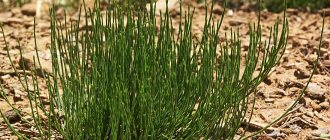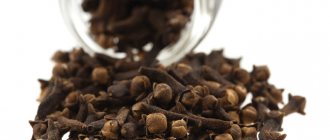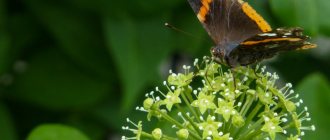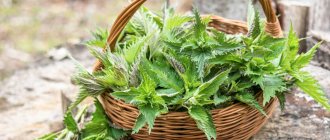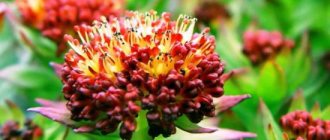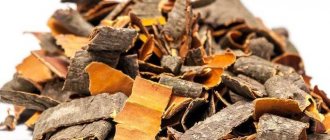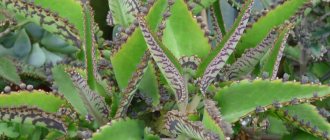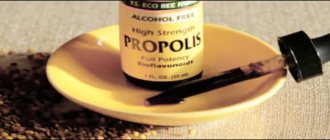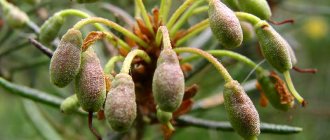Icelandic moss is a famous medicinal plant. It is a type of lichen. It is also known as Cetraria Icelandica. Its medicinal properties have been known for many centuries. Icelandic moss has found use in folk medicine and homeopathy; in addition, its extract is included in some medicines, for example, cough syrup. The Agronom.guru portal will tell you about the unique properties of the medicinal plant.
Iceland moss (cetraria icelandica)
Description
Icelandic moss is a low plant up to 20 centimeters. It usually lives on trees, stumps, stones, near rivers, swamps, and other bodies of water. It loves light and humidity very much, so the best place for growth is the edges of forest-tundra and pine forests.
Cetraria does not have roots; instead there are rhizoids, thread-like formations that attach moss to the surface of another plant.
The color of Icelandic moss is different: shades of green, brown, brown. It is difficult to confuse it with other plants, because moss has a unique, openwork shape.
Icelandic moss of various colors
Plant propagation methods, instructions
Cetraria can be propagated at any time of the year, but it is better to carry out this activity from mid-July to the end of August, when the plant begins its “flowering” period and releases the maximum number of spores.
First you need to prepare a container for planting. Any shallow, wide pot, transparent vase or aquarium will do. You should also stock up on expanded clay or small pebbles and soil with a suitable composition. You will also need to select a healthy area of moss that will be used for propagation.
You should prepare a “green smoothie” from it, according to one of these recipes:
- Raw materials (100 g) must be mixed with sour cream (50 g) and clean, preferably spring water (200 ml). The mass should be placed in a blender bowl and blended at maximum power for 1-2 minutes.
- Moss (200 g) must be placed in a blender bowl. Beer (400 ml) and sugar (25 g) must be added to the raw materials. Turning on the device at maximum speed, you need to grind the mass to a homogeneous consistency.
- In a blender bowl, combine cetraria (200 g) with kefir (200 ml), water (300 ml) and sugar (25 g). The mass will need to be ground until smooth.
After preparing the “cocktail”, you need to start planting moss, and to do this, just follow the simple instructions:
- A drainage layer must be laid at the bottom of the planting container. The layer thickness should reach 1-1.5 cm.
- The drainage needs to be sprinkled with fertile soil. Since lichen has no roots, it is enough to lay out a layer no more than 2 cm in height.
- The substrate should be evenly watered with a “cocktail” from the plant.
- The planting must be placed in a cool, shaded place.
For the first 10-14 days, you need to spray the planting daily with cold water from a spray bottle. When the young moss is strong enough, you need to gradually reduce the “watering” to once every 3-5 days. To make Cetraria grow faster, you can feed it with kefir or fresh beer. To do this, it is enough to spray the plant with nutrient liquid.
Chemical composition
Cetraria, Icelandic moss has good healing properties. This is due to the chemical composition of the plant, which includes:
- vegetable protein;
- vegetable fats;
- bitterness;
- isolequinine;
- B vitamins;
- starch;
- galactose;
- glucose;
- lignin;
- retinol;
- sucrose;
- enzymes;
- essential oils;
- micro- and macroelements: chromium, iodine, manganese, molybdenum, sodium, nickel, titanium.
It is the high nutrient content that sets the plant apart from other medicinal herbs, and treatment with Icelandic moss is considered effective.
This is how Icelandic moss grows - a storehouse of valuable substances
How to brew correctly: recipes
It is not recommended to brew Cetraria in the same way as most medicinal herbs (1 tablespoon of raw material per 200 ml of boiling water). Given the bitter taste of lichen, it must be diluted with plenty of water.
To prepare the drink, you need to take 2 g (less than a teaspoon) of Icelandic moss, brew with boiling water, and keep covered for 15-20 minutes.
Teas and decoctions from Icelandic lichen do not have a pronounced medicinal property, so you can add your favorite aromatic herbs to recipes to obtain not only a healthy, but also a tasty drink.
Pharmacological properties
Icelandic moss has distinctive medicinal properties. This is due to its unique composition, which is rich in vitamins, minerals, and nutrients.
It has the following positive effects:
- disinfectant;
- pain reliever;
- choleretic;
- expectorant;
- tonic;
- antibacterial;
- helps improve metabolic processes;
- accelerates cell regeneration;
- slows down the aging process;
- strengthens the immune system and the body’s natural protective functions;
- has a sedative effect.
In folk medicine, Icelandic moss is used in the treatment of diseases of the gastrointestinal tract, oral infections, skin diseases, colds, is used to normalize sleep, reduce depression, and also for tuberculosis.
Icelandic cetraria has a wide range of therapeutic effects
Why does the plant dry out and turn yellow?
Cetraria, which is easy to grow at home, is one of the non-capricious plants. But certain conditions must be created for it, because in an unfavorable environment the crop begins to turn yellow and dry out.
And most often this is due to the following reasons:
| Cause | Consequence | How to fix |
| Excessive lighting | Direct sunlight causes severe burns on the plant thalli. And this leads to yellowing and wilting of the crop. | The plant should be moved to a more shaded place. Cetraria needs enough diffused light for 2-3 hours a day. So it can be kept in the corridor and in the back of the room. |
| Insufficient humidity | Cetraria needs high humidity, and in dry conditions it begins to die off. | The crop should be sprayed at least once every 3-5 days. In the process, it is worth using cool water, since warm moisture has a bad effect on the condition of the plant. |
| Conditions are too hot | Cetraria does not tolerate heat well, and the optimal temperature for its development is within +20...+22 °C. | To save the plant, you need to move it to a cooler room. You can take the cetraria to the balcony or garden, but you should choose the most shaded area for it. You can also move the Icelandic moss closer to the air conditioner, because it is not afraid of drafts. You can also lower the temperature near the lichen using containers filled with cool water. |
Indications for use
Indications for the use of Icelandic moss vary. It may be useful in the following cases:
- In the treatment of diseases of the respiratory system, accompanied by a severe cough, sputum discharge, runny nose, and increased body temperature.
- For relief of allergic reactions and associated dermatological manifestations: rash, skin irritation, itching.
- Take to combat disorders and diseases of the gastrointestinal tract, accompanied by constipation, cramps, bloating, and diarrhea.
- The components included in the composition help speed up metabolism and improve metabolism, so cetraria has found application in dietetics and is used for weight loss.
Various tinctures and teas are made from Icelandic moss.
Icelandic moss tea
Against cough
Icelandic moss contains antibacterial components.
It helps cleanse the respiratory tract, lungs, bronchi from phlegm, and cleanse them.
And the acids included in the composition help get rid of infectious agents, harmful fungi, bacteria, and viruses.
Icelandic moss is suitable for the following diseases:
- asthma;
- bronchitis;
- whooping cough;
- tuberculosis;
- pneumonia;
- other diseases of the ENT system: viral infections, sore throat, tonsillitis, laryngitis, common cold.
When brewed, moss produces a characteristic mucus. It passes gently through the airways, reducing pain. This is important for dry coughs that cause discomfort.
The best cure for cough is the use of tincture or hot tea based on Icelandic moss.
To prepare, brew a tablespoon of cetraria with a glass of boiling water and leave for half an hour. It is better to divide the finished drink into three equal parts and drink it throughout the day. Do not store the prepared mixture for more than a day.
Coughs are perfectly treated with Icelandic moss.
For allergies
Icelandic moss tincture or tea helps combat seasonal allergy symptoms. It effectively relieves inflammation of the mucous membranes, reduces itching, irritation, and reduces rashes.
The properties of Icelandic moss can be enhanced by adding other medicinal herbs to the infusion. The main thing is that they combine properties and do not cause an allergic reaction or intolerance.
You can soothe your skin and reduce rashes by taking a bath with Icelandic moss. It must be dissolved in hot water and soaked in it for 15-20 minutes. After the bath, it is better to take a shower and wash off the remaining broth from the skin.
For constipation
Icelandic moss can be used to combat constipation. The components included in the composition have a gentle effect on the intestines and help eliminate waste and toxins.
To treat constipation, you need to prepare the following tincture: brew half a glass of finely chopped herbs and pour a liter of boiling water.
The drink lasts for 24 hours. It should be taken three times a day in a glass - 250-300 milliliters at a time.
Icelandic moss is an excellent solution for bloating and constipation.
For weight loss
Cetraria is also used for weight loss. This property is determined by the ability of Icelandic moss to regulate metabolic processes and improve them. In this case, it is recommended to take not a tincture or tea, but a jelly based on reindeer moss.
When mixed with water, Icelandic moss produces a mucus that has a jelly-like consistency.
To prepare jelly, you need to mix half a glass of water with 1.5-2 glasses of clean filtered water. The mixture is boiled on the stove until the moss is completely dissolved. The mixture should be homogeneous.
By nature, cetraria has a bitter taste. To get rid of it, you need to soak the moss overnight in water with added salt. For 5 liters of water take 3-3.5 spoons.
Icelandic cetraria is used for weight loss
Contraindications for use
Although Icelandic moss is rich in medicinal properties, it also has contraindications, which include:
- period of pregnancy and breastfeeding;
- children in infancy up to 3 years;
- individual intolerance to components, the presence of an allergic reaction;
If you have diseases that are in the acute stage, the plant is also not recommended.
Harm and contraindications
Despite all its usefulness, Icelandic moss, like any medicinal product, can be harmful to human health if the rules of use and consumption are violated. The following side effects may occur:
- nausea and aversion to certain products or odors with prolonged use of moss preparations;
- deterioration of intestinal motility and other gastrointestinal disorders;
- detrimental effect on the functional activity of the liver;
- allergic reactions in case of overdose.
It is also not recommended to use Icelandic moss in the following cases:
- during pregnancy at any stage and during lactation;
- if there is increased sensitivity of the gastric mucosa or chronic liver disease;
- when taking certain medications (possible incompatibility);
- when individual intolerance to the components that make up the moss is identified.
In any case, it is advisable to use Icelandic moss carefully, after consultation with your doctor. Icelandic moss should only be purchased from trusted suppliers or pharmacies. It is equally important to use only proven recipes and not to violate the rules for harvesting and storing lichen.
Features of Icelandic moss
Icelandic moss is a real storehouse of nutrients, vitamins, and minerals. For this, it is highly valued in both folk and traditional medicine.
Many cough medications are based on cetraria and can be used by both children and adults.
The main feature of Icelandic is the content of the natural antibiotic usnic acid.
Usnic acid is the main component of Icelandic moss and is widely used in medicine.
Habitat
Icelandic moss can be found in high mountain forest-tundra, peat bogs, swamps, and also near coniferous forests.
It easily takes root in any area, often germinating next to stones, on poor, infertile soil.
It can be found in Africa, North America and Australia.
Where does it grow in Russia? You should search on the edges of pine forests, near ponds and rivers. Iceland moss prefers moist but sunny areas. The main thing is that it is environmentally friendly, otherwise the beneficial properties will be neutralized by toxic compounds.
Preparation and storage
The thallus is prepared for medicinal use. Traditionally, the period for collecting Icelandic moss is considered to be summer; it can be harvested in the fall, in dry weather. The lichen thallus is torn from the soil, cleaned of contaminants and dried. The main difficulty in harvesting is the process of cleaning Icelandic moss from soil and foreign impurities, which is usually done manually. Drying can be carried out both in the shade and under sunlight, and, of course, in industrial dryers. The raw materials for drying are laid out on paper or fabric mats in a thin layer.
Finished raw materials of Icelandic cetraria can retain their beneficial properties for two years if the correct storage conditions are observed - in tightly closed containers, in a dry room at a cool air temperature. When storing in boxes, raw materials are covered with paper to prevent excess moisture from entering, since moss absorbs it like a sponge.
The raw materials suitable for consumption have a unique aroma and bitter taste. When it gets into the water, Cetraria becomes slimy. The decoction, after cooking and cooling, resembles jelly in consistency.
Usnic acid is a natural antibiotic
The medicinal properties of the plant are largely determined by the presence of a natural antibiotic, usnic acid, in combination with other specific organic compounds.
Usnic acid is characterized by the following positive effects:
- antiviral;
- insecticidal;
- anti-tuberculosis;
- analgesic;
- antibacterial.
It is important to know that the concentration of ausic acid in the plant largely depends on the harvest season. It is most abundant in the summer, least in the autumn-winter.
Preparations based on Icelandic moss actively fight pathogens, viruses and infections, promoting the overall strengthening of the immune system and strengthening protective reactions.
Increasing immunity is the task of usnic acid
Scientific research on Cetraria Icelandica
Experimental treatment with lichen and preparations made from it was carried out just before the collapse of the USSR at the Institute of Phthisiapulmonology of the then city of Leningrad. A strong drug was created, which, according to the memoirs of Doctor of Medical Sciences M.V. Pavlova, showed good results in the treatment of tuberculosis patients. However, with the collapse of the USSR, research and use of the drug were suspended.
In the 90s, scientists again turned their attention to the once forgotten plant organism: the biochemical mechanisms of action of Icelandic moss were actively studied in scientific laboratories in the USA, Iceland, Austria, and Japan.
Thus, Japanese doctors discovered that lichen mixed with green tea and some pharmacologically active plants is a drug for the prevention and treatment of cancer. This is possible due to the joint action of carbohydrates and lichen acids, which suppress enzymes involved in the metabolism of cancer cells.
A little later, the powerful antioxidant effect of cetraria was discovered, which promotes the restoration of the body and stops its premature aging: the plant body is 10 times more active than vitamin E.
Use of Icelandic moss for medicinal purposes
Icelandic moss is widely used for medicinal purposes. As already mentioned, this is due to the components included in the composition. For each individual system of the body, cetraria can bring certain benefits, as well as increase the overall tone of the body, making it more resistant to viruses, infections, and harmful bacteria.
For the cardiovascular system
This type of lichen is often recommended for patients with diseases of the cardiovascular system such as:
- heart failure;
- arrhythmia;
- hypotension;
- bradycardia.
In these cases, it is recommended to use low concentration tea based on moss. It will have a general calming effect, reduce anxiety and stress.
For the respiratory system
As already mentioned, cetraria is a good remedy for the treatment and prevention of diseases of the respiratory system.
There is even a second name for the plant - “lung moss”, which largely describes its positive properties.
Usually tea, decoction, or infusion based on cetraria are used. They alleviate the condition and contribute to a general improvement in well-being.
Iceland moss is good for the heart and lungs
For the male genitourinary system
Moss contains a powerful natural antibiotic, usnic acid, which also actively fights diseases of the genitourinary system. It destroys bacteria and infections - the main causative agents of such ailments.
Traditional healers note that a decoction of cetraria in combination with lemon balm helps get rid of prostatitis and prostate adenoma.
For gastrointestinal diseases
Cetraria is also often used to relieve patients from diseases of the gastrointestinal tract. The beneficial effect is due to the release of mucus from moss upon contact with water. It gently envelops the walls of the stomach, helps reduce cramps, pain, and gas formation.
Just half a glass of decoction based on Icelandic moss can quickly relieve diarrhea and the unpleasant symptoms that accompany it.
In addition, traditional healers claim that infusions and teas help improve the general condition in the treatment of gastritis.
Beneficial components of Icelandic moss are used for the treatment of prostatitis and gastrointestinal pathologies
For the thyroid gland
The components included in the composition help regulate metabolism, and this, in turn, has a positive effect on the thyroid gland. Regular intake of the infusion will help improve the production of hormones and normalize the general background.
Tea with Icelandic moss is recommended for women during menopause. In addition, such a drink will help reduce the discomfort of premenstrual syndrome.
For cancer
Icelandic moss will also be beneficial for cancer patients. It promotes:
- general strengthening of the body;
- accelerated cell regeneration;
- removal of waste, toxins, and decay products from the body - which is especially important during the period of chemical therapy;
- protecting the body from viruses and microbes.
Naturally, it will not be possible to get rid of oncology only by taking decoctions. But infusions, teas, and other drinks will help the body survive this difficult period and restore its strength.
Icelandic cetraria is used in the treatment of endocrinological and oncological diseases
As a general tonic
Since the times of ancient Iceland, moss has been eaten as a dietary supplement to increase strength and energy.
The vitamins and mineral components included in the composition actually have a tonic effect, help strengthen the immune system, and enhance the body’s natural defense reactions.
Reviews on various thematic forums indicate that moss is used even for anemia, various stages of vitamin deficiency, and also to improve the health of children after three years.
Reviews about cetraria
Icelandic moss is very popular as a natural healing agent and its effectiveness in treating diseases is beyond doubt, especially when under any information about the use of this medicine you can find a large number of positive reviews.
Svetlana Tarasova, 66 years old.
I am an elderly woman and at my age many medications have side effects and are detrimental to my health. With age, I began to get colds more often, and as you know, doctors immediately prescribe antibiotics first. In the fall, she suffered from a severe cold and for a long time could not recover from the cough, and the weakness from the illness made itself felt. Tablets and syrups did not help and there was no point in drinking them, and the medications worsened my stomach problems.
A pharmacist friend advised me to buy Icelandic moss on the Internet and drink a course of decoctions. I am skeptical about folk remedies unknown to me, but this time I decided - the unbearable cough was very debilitating.
To my surprise, the moss decoction began to help significantly already on the third day, and after 2 weeks I completely forgot about the disease. Moreover, I began to feel more energetic and healthy in every way. After completing the course over the past winter, there was not a single hint of a cold. Now I know for sure that it was moss that helped me recover and strengthen the strength of my body - before using it, I was sick much more and more debilitatingly.
Liya Tsibina, 36 years old.
After the second birth, I gained a lot of weight and began to have metabolic problems. Doctors and nutritionists I knew gave me endless lists of advice and prescriptions on how to lose weight and what to take. On any weight loss medication, I found a list of ingredients that were not only addictive, but also allergic, so I didn’t risk using them.
An incident helped me cope with the problem - a cousin who came from Altai brought Icelandic moss with her, it helped her against allergic manifestations when using detergents and cleaning products. It was my sister who insisted that I try a course of infusions with this plant, for which I am grateful to her.
After just one course of treatment, I painlessly lost 7 kg in a month and a half and forgot about metabolic disorders. I would never have thought that a folk remedy, and even one from the category of lichens, would help me with my health.
Alexander Bedenko, 44 years old.
Several years ago I caught a bad cold while going hunting with a friend. After this incident, I began to get sick much more often and my health became much weaker, despite the fact that I always did physical activity and did not indulge in bad habits. I accidentally read in an old herbalist a recipe for a decoction of Icelandic moss for coughs and colds. I am a fan of traditional medicine, but this is how, according to some author, I decided to try Icelandic moss for the first time. I won’t go into details, but almost 2 years have passed since I started using moss, and I completely forgot about colds, sore throats and coughs. Moreover, seasonal allergies stopped tormenting me. Now I regularly use Icelandic moss.
Pharmacy drugs
Increasingly, you can see medicines based on Icelandic moss on pharmacy shelves. These include:
- Syrups for coughs, diseases of the lungs, bronchi, and respiratory tract. “Gerbion” and “Pectolvan” are widely popular.
- Lozenge tablets for resorption, reducing sore throat, mitigating dry cough.
- Creams and ointments, which also include bear fat, propolis, and other medicinal herbs. They are effective for colds, bruises, and joint pain.
- “Sodium usinate” is a product produced since Soviet times that is effective for burns, wounds, and cracks.
The composition of pharmaceutical drugs is characterized by maximum thoughtfulness. Each component here only enhances the properties of the other.
Isla - lozenges based on Icelandic moss
Icelandic moss: botanical characteristics
In addition to its main place of growth - Iceland, Cetraria can be found in Russia, North America, Great Britain, Scandinavia, and Antarctica. Icelandic moss has 2 chemotypes that are difficult to distinguish from each other, but they are called Cetraria islandica.
The young shoot of Icelandic moss is called a thallus. Its height varies between 1-10 cm. The thallus is often greenish on top and light brown underneath. If you dry the thallus and grind it into powder, you get a natural medicine. Popularly, Icelandic moss has received other names. It is called musk, liver grass, cetraria, fucus, lichen.
Procurement of raw materials at home
Proper preparation will allow you to get the maximum of useful substances and medicinal properties from Icelandic moss. It is based on several simple principles:
- Time. The highest concentration of vitamins and minerals occurs in the summer. Therefore, it is better to collect moss in August. At the same time, try to choose a warm, windless day.
- Moss must be plucked by hand, because it easily breaks off from the tree or stump on which it is attached.
- After collection, you must carefully examine the plant. If the branches have a white coating, spots, or rot, then they must be disposed of, since all these are signs of diseases and pests.
- The leaves are not washed before drying. Simply cut it into small pieces and place it on a flat surface. The main thing is that direct sunlight does not fall on this place.
After drying, the moss must be placed in thick fabric bags. You can sew them yourself from old pillowcases or sheets. It is recommended to store dry raw materials for no more than two years.
This is how Icelandic moss should be stored.
Where to buy cetraria and how much it costs
Like any medicine, it is better to purchase cetraria in pharmacies or from trusted suppliers. Usually, pharmacy kiosks will sell you good quality Icelandic moss and tell you exactly how to use it (preferably for each specific disease).
You can also buy medicinal moss of excellent composition in online stores and have it delivered to your home. It is possible that traditional healers can also provide lichen ready for use and give valuable instructions for its preparation. But in this case, you need to contact trusted healers, since not everyone follows the rules for collecting and storing medicinal plants.
Even if you just want to try Icelandic moss for treatment or strengthening the body, it is better to contact professional pharmacists. The usual price of pharmaceutical raw materials from cetraria is from 85 to 120 rubles, and when purchased at licensed retail outlets, there is a guarantee that the raw materials have healing properties.
Icelandic moss is a folk remedy, the medicinal properties of which are recognized not only by connoisseurs of folk remedies, but also by official medicine. Therefore, if there are indications for the use of moss, it is worth trying it, of course, after consulting with your doctor.
Traditional medicine recipes
We will tell you how to brew Icelandic moss correctly below.
Moss-based decoction
A decoction based on moss is prepared in milk or water.
There are several interesting, healthy recipes, which include:
- “Five-minute”: 500 ml of clean water or milk are mixed with 1-2 tablespoons of dry moss. The resulting mixture is brought to a homogeneous mass in a water bath, and then filtered. It is advisable to drink it warm; you can add honey, lemon or other herbs to taste.
- “Yugoslav drink”: in this case, the tincture is prepared like tea. One teaspoon of dry herb is mixed with a mug of boiling water. This decoction can be drunk after 5-10 minutes, optimally before bed. It will have a calming effect, help you fall asleep faster, and get rid of insomnia.
- “30-minute decoction”: prepared from two teaspoons of dry moss and a glass of boiling water. The resulting mixture should be heated in a water bath for half an hour, after which you can drink it by adding lemon or honey. This mixture is a good cure for bronchitis.
Preparing such drinks does not take much time, but will bring enormous benefits to the body.
Tea with milk and Icelandic moss is a tasty and healthy drink
Alcohol tincture
To prepare the tincture, you need to mix one hundred grams of dry leaves and a liter of strong alcohol, such as vodka. It is better to choose high-quality, purified alcohol, otherwise intoxication may occur.
The mixed ingredients must be infused for a week. Take 15-20 drops daily three times a day, adding to tea or water.
This infusion will help get rid of cough and respiratory diseases. It also reduces bad breath.
Infusion
An infusion is prepared from two to three teaspoons of dry moss and 250 ml of clean, filtered water. The raw materials are poured, put on fire and brought to a boil. After boiling, the mixture must be removed from the stove, moved to a warm place and left to brew for two to three hours.
After cooling, an even layer of mucus forms at the bottom; it is this that is responsible for the consistency of the decoction.
It is necessary to take it together with it, because it helps improve the functioning of the gastrointestinal tract and reduce pain.
All recipes and reviews can be found on various thematic forums, where traditional healers share their ideas and developments.
Icelandic moss tincture
Syrup
Syrup with Icelandic moss has increasingly begun to appear on pharmacy shelves, although previously it was used mainly in folk medicine. The most popular types of medications are:
- Isla mint - lozenges based on moss and mint syrup for the treatment of throat diseases.
- Herbion is a syrup based on natural plant components, one of which is Icelandic moss.
- Isla Moos - tablets used for diseases of the respiratory system and respiratory tract.
- Pectolvan Icelandic moss Phyto is an alcohol syrup that has a powerful expectorant effect.
All syrups help reduce pain during dry coughs and accelerate sputum discharge.
In addition, you can make syrup with Icelandic moss at home. You need to take 5 tablespoons of dry raw materials, pour 500-600 ml of boiling water. Heat the mixture on the stove and cook for 5-7 minutes. The moss will break up into small pieces and mix with water.
Conditions for keeping the plant at home
Cetraria, like most lichens, is an unpretentious plant. And in order to create a comfortable environment for the crop, you will need to choose the right substrate and container for planting.
You also need to maintain a certain temperature and humidity near the plant, and also provide the lichen with minimal care, which consists of regular but moderate watering.
Lighting
Icelandic Cetraria, which is easy to grow at home, is a shade-loving plant. And direct sunlight is contraindicated for her.
So it is better to keep the culture near the northern, eastern, western window, or in the back of the room. It is important that the sun's rays fall on the moss only in the morning or evening, and for no more than 3 hours. Then its color will become most intense.
Temperature
Cetraria is not a heat-loving plant, and it develops better in cool conditions. And it is desirable that the temperature near the crop does not exceed +22 °C.
Humidity
Cetraria develops only in conditions of high humidity. And when growing at home, it will need to be regularly sprayed with cool water from a spray bottle. This procedure should be carried out daily for 1-2 weeks after planting. In the future, the Irish will need to be sprayed every 3-5 days.
There is no need to water the plant. And if the crop darkens, then the number of sprayings should be reduced.
Soil and drainage
Cetraria, which anyone can grow at home, prefers loose, fertile soil with a neutral or slightly acidic reaction. At the same time, it should allow air to pass through well and retain moisture well. A good solution would be coconut substrate. You can also purchase special soil intended for marsh plants.
To make soil for cetraria yourself, you need to mix peat and black soil in equal parts, and add a little clay and expanded clay to the mixture. The resulting substrate must be disinfected.
The soil intended for planting Icelandic cetraria must be disinfected by calcination in the oven
This can be done in different ways:
- Warming up in the oven. You will need to place the substrate on a baking sheet. The layer thickness should not exceed 5 cm, otherwise the soil will not warm up evenly. The form should be sent to the oven. It is necessary to warm up the soil for 30-45 minutes. at a temperature of 90 °C.
- Steam treatment. Place a bucket of water on the stove and bring it to a boil. Place a sieve on the container and pour the prepared soil into it. It is advisable to cover the structure with a lid. By reducing the heat to medium, you need to warm the substrate for 90 minutes.
Cetraria does not tolerate stagnant moisture at the roots, so before planting moss, it is important to arrange drainage. For this purpose, you can use expanded clay or small river pebbles. The diameter of these materials should not exceed the size of peas. And the drainage layer should reach 1-1.5 cm.
It is also important to disinfect the materials so that the plant is not infected by bacteria. To do this, expanded clay or pebbles should be placed in a glass or ceramic bowl and moistened well with water. The container must be placed in a microwave oven, and the material must be processed at maximum power for 5-10 minutes. The drainage can be used only after it has completely cooled down.
You should also prepare containers for growing Icelandic moss. Shallow, flat pots are suitable, as well as mini-aquariums, transparent vases or large glasses.
Cetraria, its appearance, properties. Photos of cetraria
Icelandic Cetraria (Cetraria islandica) is a small bush about 10 - 15 centimeters in height, which is clearly visible in the lichen cover of a pine forest. After all, it differs in both color and shape from the surrounding cladonia. Sometimes the clumps of Icelandic cetraria are quite large and occupy a significant area.
Lichens Cetraria Icelandica and Cladonia
This lichen is bushy. Its thallus rises quite high above the ground, forming a kind of bush. However, there are no podecia, like those of Cladonia. The thallus of Icelandic moss consists of many forked lobes, which are usually curled at the ends.
The color of lichen depends greatly on air humidity. In rainy weather, cetraria will be greenish-brown and olive. At this time, the lichen bends well without breaking.
Icelandic cetraria turns green in the damp air
In dry weather, the thallus becomes light brown and shiny. With slight pressure at this time, the lichen easily breaks and crumbles.
The underside of the blades is always lighter. Maculae appear on it - unclear light spots, devoid of a layer of cortex. They are used by the lichen to conduct air into the thallus (thallus). In addition, reddish spots are common in the ground part of the blades on the underside.
Cetraria turns light brown in dry weather
Along the edge of the lobes the thallus is covered with small cilia. Usually they are not present only at the very top. At the top of the blades (very rarely!) round cakes of fruiting bodies appear - they are large, up to one and a half centimeters, dark brown.
Spores ripen in the fruiting bodies - apothecia. However, like most lichens, Cetraria does not rely much on this important but extremely inefficient method of reproduction. After all, to live, a sprouted lichen needs not only the fungal thallus that arises from a spore. It is still necessary to detect and capture algae cells. And this is always a game of chance.
But Icelandic moss can reproduce from almost any part of its thallus. Animals or people walked through dry lichen, breaking off pieces of it. Particles can be carried by the wind, sometimes over a considerable distance. Having caught there, the lichen forms threads - rhizoids and is finally fixed by them in a new place. It just grows very slowly - only one to two millimeters per year.
Cetraria is unique in its chemical composition. However, the same can be said about almost any lichen. The thallus contains a lot of lichenin, as well as isolichenin. This is lichen starch. The “chemical factory” of Icelandic moss produces specific lichen substances. In first place among them is usnic acid. This is the strongest natural antibiotic. Vitamin B12 was discovered in Icelandic cetraria. There is also a substance called cetrarin, which is responsible for the bitter taste of lichen.
